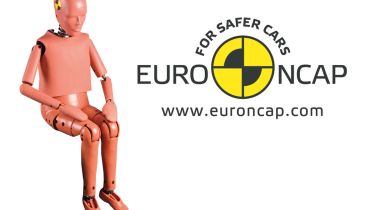Euro NCAP boosts child safety tests
Euro NCAP is introducing new child dummies the size of six and 10-year-olds, to improve its tests of rear seatbelts
Crash tests that measure how safe your child is in the back seat of your car currently aren’t up to scratch, according to experts at Euro NCAP. But that’s set to change, with the introduction of larger-sized dummies representing older kids.
At present, only two child dummy sizes – 18 months and three years – are used when a car is crash-tested. However, Euro NCAP has told Auto Express that as children between these ages are almost always strapped into child seats locked into ISOFIX anchor points, the seatbelts in the rear are not being tested.
Euro NCAP technical manager Richard Schram said: “At the moment, the way we assess child safety is using car seats, which in nine out of 10 cases don’t use any of the rear seatbelt restraint systems. So we don’t think that the consumer is best served, as not everyone has these seats.”
The new regime will ditch the 18-month-old and three-year-old dummies altogether, replacing them with dummies the size of six and 10-year-olds. As these older, larger children use booster seats, the car’s seatbelts, which they rely on, will be scrutinised.
Schram explained: “We have seen really advanced seatbelt systems in the front and this technology is not being transferred to the rear at the moment. We need a more advanced seatbelt with pre-tensioners, so it will be more forgiving and allow you to move forward a little in a crash. By using older child dummies, we will start to encourage the car makers to do that.”
Manufacturers whose rear seatbelts fall short will achieve lower scores in the child protection section of the Euro NCAP crash test when the new dummies are introduced, which will mean a lower overall star rating for the car.
The new dummies won’t be introduced into the Euro NCAP crash tests until 2015. However, as early as next year, a new child seat rating could be included in the tests.
Euro NCAP will also be using scores from crash tests by Europe’s largest automobile club, ADAC, to check the safety of a wide range of child seats – not just the expensive manufacturer-recommended models.
Schram added: “ADAC is already crash-testing child seats, so we will use the ones with the best scores, covering all the age groups, and install them to check the seat’s fitment in the car, and ensure there are no problems.”
Find a car with the experts


